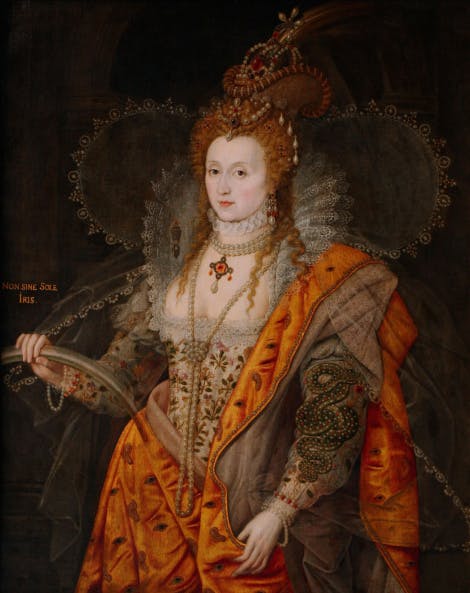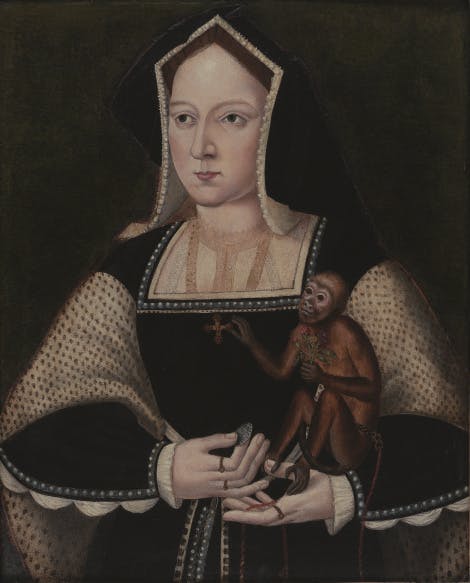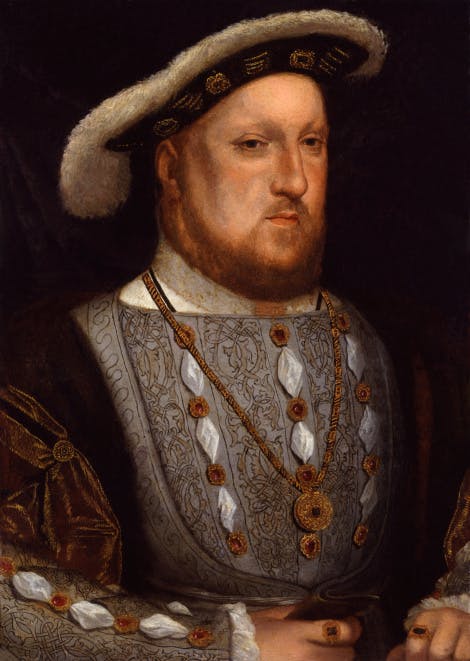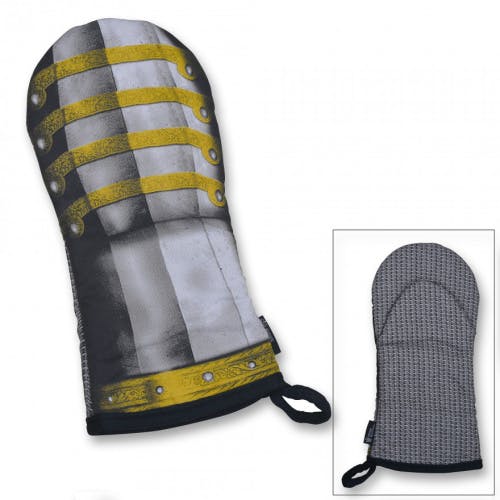
The true story behind the 'bloody' Tudor queen
The Magic Garden is closed 02 January 2026 due to adverse weather conditions.
Mary I was the first uncontested Queen Regnant of England. The daughter of Henry VIII and his first queen, Katherine of Aragon, she boasted a formidable bloodline that encompassed both the English and Spanish royal families.
For the first 17 years of her life, Mary was the sole heir to the Tudor dynasty. But upon the annulment of her parents’ marriage she was declared illegitimate and supplanted first by her half-sister, Elizabeth (the future Elizabeth I), and then her half-brother Edward (the future Edward VI).
Against the odds, Mary succeeded to the throne in 1553. But her brief, turbulent reign, during which she tried to overturn her father’s religious reforms, earned her the sobriquet ‘Bloody Mary’.
Header image: Detail of a portrait of Mary I, painted around 1554-59. © Royal Collection Enterprises Ltd 2025 | Royal Collection Trust
What is a queen regnant?
‘Queen regnant’ is the official title of a queen who rules in her own right. The last Queen Regnant in the UK was Elizabeth II.
We are both young. If it was a daughter this time, by the grace of God the son will follow.
Henry VIII in a buoyant mood, to the Venetian ambassador after Mary’s birth
Read more: Henry VIII's children

Image: Mary painted in around 1525. © National Portrait Gallery, London
A 'much beloved’ princess: Mary’s childhood
Mary I was born on 18 February 1516 at the Palace of Placentia in Greenwich, her father’s favourite palace. Henry VIII had hoped for a son but, after losing several children, a healthy daughter was a relief.
A court in miniature
The infant Mary spent an unusual amount of time with her parents at Greenwich. She had a sizeable household including a wet-nurse, Katherine Pole. A team of four rockers kept her pacified in her cradle and she had a personal laundress.
Within days of her birth, Mary was assigned a treasurer to manage her household finances, as well as a chaplain and a gentlewoman. It was a court in miniature for the tiny princess, and its personnel would become her family.

Image: Katherine of Aragon, attributed to British School, 16th century. © Royal Collection Enterprises Limited 2025 | Royal Collection Trust
Mary’s first Lady Mistress, the woman in overall charge of her household, was Elizabeth Denton, who had superintended Henry VIII’s nursery. In 1518 she was replaced by the highly capable Lady Margaret Bryan, mother of the King’s favourite Francis Bryan. Margaret Pole, Countess of Salisbury, was given the influential position of Lady Governess at the wish of her close friend, Queen Katherine.
Mary benefited from an extensive education, which included languages, religious instruction and classics. Katherine of Aragon commissioned the Spanish humanist Juan Luis Vives to design a plan of study for her daughter, which was set out in several educational treaties under the title Education of a Christian Woman. Like Katherine, his views on women’s education were both strict and conventional.
Daughters should be handled without any cherishing. For cherishing mars [spoils] the sons but utterly destroys the daughters.
Spanish humanist Juan Luis Vives on Mary’s education
Juan Luis Vives also taught that the purpose of a woman’s education was to serve as her husband’s companion, which was vital to the state.
At the same time, though, Katherine instilled in her daughter the belief that queenship was her divine duty. As the daughter of two ruling monarchs, Ferdinand and Isabella of Spain, Katherine did not hold the same prejudice against female rulers as her husband Henry. In this respect, she exerted a profound influence over her young daughter.
As was traditional for a royal princess, Mary was taught the courtly refinements of music and dancing, and excelled in both. At the age of two, she made a visit to court and heard the Venetian organist, Dionysius Memo, playing for her father’s guests.
She was so delighted with his performance that when it had ended she ran after him calling for him to play some more. By the age of four, she could play the virginals and she later learned the lute and regal (a kind of organ).

Image: Princess Mary, later Queen (1516-1558) 1537-43. © Royal Collection Enterprises Limited 2025 | Royal Collection Trust.
Physical exercise was also an important part of a Tudor infant’s upbringing. It was agreed that ‘at seasons convenient’ Mary would ‘use moderate exercise for taking open air in gardens, sweet and wholesome places and walks which may confer unto her health, solace and comfort.’ Her mother also sometimes took her riding and hunting.
The Venetian ambassador claimed that Mary was ‘much beloved by her father’, who proudly showed her off visiting ambassadors, all of whom praised her appearance and intelligence.
One described her long red hair as being ‘as beautiful as ever seen on human head’, and another complimented her delicate, ‘well proportioned’ figure, as well as her ‘pretty face… with a very beautiful complexion’.
The French ambassador considered her very handsome, and admirable by reason of her great and uncommon mental endowments.
Gasparo Spinelli, a Venetian dignitary, after seeing Mary dance
'The cursed bastard'
Aged nine, Mary was sent to live at Ludlow Castle, the traditional residence of a Prince of Wales. She was still the King’s only heir and her mother, Katherine of Aragon was moving beyond childbearing years.
Along with an impressive 300-strong household, Mary was given responsibility for presiding over the Council of Wales and the Marches. This was largely symbolic – a 9-year-old girl could hardly be expected to take on the full scope of this role.
But the fact that she was also accorded many of the other royal prerogatives normally reserved for a prince of Wales suggests that the King was beginning to accept that she might be his sole legitimate heir.
Read more: Anne Boleyn

Image: Princess Mary by Wenceslaus Hollar, after Hans Holbein the Younger. © National Portrait Gallery, London
In 1527, Mary returned to London. During her two-year absence, the situation at court had changed dramatically. Her father had declared his love for Katherine’s lady-in-waiting, Anne Boleyn and was seeking an annulment of his marriage to Mary’s mother.
In 1531, Katherine of Aragon was banished from the court and Anne was established as queen in all but name. These events changed Mary’s life forever, and had a profound impact on her health. The formerly confident, lively young woman was now beset with melancholy, depression and stomach upsets, worn down by fear about what the future would hold.
In January 1533, Henry VIII married Anne Boleyn in secret. His marriage to Katherine was declared null in May, which rendered Mary illegitimate. In September that year, Anne gave birth to a daughter, Elizabeth, putting Mary even further from the throne.
The following year, Parliament passed the Act of Succession, which stipulated that only the children born of Henry’s new marriage had the right to succeed to his throne.
Mary, already a bastard, was now legally excluded from the succession. But she remained steadfast in her belief that her parents’ marriage was valid and she ‘knew no other Princess in England except herself’.
As a punishment for her resistance, Henry announced that he intended to disband his eldest daughter’s establishment and make her serve the new princess when Elizabeth moved to Hatfield in December 1533. Mary was forced to leave behind almost all the ladies who had been her constant companions since childhood, including the Countess of Salisbury.
Stepmothers
Nobody was more delighted than Mary when Anne Boleyn fell from her father’s favour less than three years after supplanting Katherine as queen. The day after Anne’s execution, Henry was betrothed to Jane Seymour. showed Jane ‘great love and reverence’ towards her elder stepdaughter, who responded in like manner; she even referred to the new Queen Jane as her ‘good mother’. Henry invited Mary to court gave her some of Anne’s jewels.
In June 1533, Mary reluctantly gave in to pressure from Henry’s officials. Acknowledging that her parents’ marriage had been invalid, she accepted her father as supreme head of the church.
In the aftermath of Anne Boleyn’s execution, Mary’s attitude towards her little sister appeared to soften. She even spoke up for the motherless girl in a letter to her father, telling him: ‘My sister Elizabeth is well, and such a child toward, as I doubt not but your Highness shall have cause to rejoice of in time coming’.

Image: The Family of Henry VIII, c1545. © Royal Collection Enterprises Ltd 2025 | Royal Collection Trust
Mary also showed affection towards her new baby brother, Edward (the future Edward VI), who was born at Hampton Court Palace in October 1537. Both Mary and Elizabeth attended the elaborate christening at the Chapel Royal there.
When Queen Jane died shortly afterwards, Mary sent Edward a succession of rich gifts. Edward was very fond of his elder sister. He ‘took special content’ in her company and once assured her that despite his infrequent letters: ‘I love you most.’
Mary had little contact with Henry VIII’s next wife, Anne of Cleves during their short marriage in the first half of 1540, but the two women became quite close in the years that followed.
In contrast, relations between Mary and Henry’s next short-lived queen, Catherine Howard, were frosty. Catherine complained to Henry that his daughter was showing her inadequate respect and took steps to reduce Mary’s household.
Read more: Thomas Cromwell's fateful match-making

Image: Elizabeth I when a Princess c1546. She and Mary were restored in the order of succession in 1544. © Royal Collection Enterprises Limited 2025 | Royal Collection Trust
Mary was much closer to her fifth and final stepmother, Katherine Parr – at least at first. As a staunch Protestant, Katherine was on the opposite side of the religious divide to Mary, but she was a kind, benevolent woman and Mary adored her. Thanks to Katherine’s benign influence, Mary and Elizabeth were restored to the order of succession in 1544.
However, when Henry died in 1547 and Katherine married Thomas Seymour soon afterwards, Mary was outraged.

Image: Mary by Master John, 1544. © National Portrait Gallery, London
The scarcely cold body of the King our father [has been] so shamefully dishonoured by the Queen our stepmother.
Mary urging Elizabeth to join her in spurning Katherine Parr after Henry’s death
Sibling rivalry
Upon Henry VIII’s death, the nine-year-old Edward became King Edward VI. He was determined to firmly establish Protestantism in England; like Elizabeth, he had been raised in this new faith. But it set him and Mary on a collision course when she refused to conform. Mary spent the rest of Edward’s short reign as a virtual exile from court.
‘It is a scandalous thing that so high a personage should deny our sovereignty… this I will say with certain intention, that I will see my laws strictly obeyed, and those who break them shall be watched and denounced.
Edward’s furious letter to Mary, on discovering she was continuing to celebrate Mass
Shortly before his death in July 1553, Edward changed the succession in favour of his Protestant cousin, Lady Jane Grey. But most of his subjects saw Mary as the rightful heir to the Tudor throne and she was quick to rally support.
Just 13 days after Edward’s death, Mary was proclaimed Queen Mary I amidst great rejoicing.
'Sole Queen'
The celebrations proved short-lived. Mary was England’s first queen for almost 400 years. In an age when women were generally regarded as inferior to men in every respect, the odds seemed stacked against Mary. The Protestant preacher John Knox declared it ‘monstrous’ for a woman to ‘bear rule’.
On 29 July 1553, Mary rode in triumph through the streets of London. Although she was determined to impress her new subjects with her queenly authority, she was naturally introspective and lacked her father’s charisma and presence. Responding awkwardly to the cheers, she appeared aloof and uncomfortable as she processed through the crowds. When a group of poor children sang a verse in her honour, it was noted with disapproval that she ‘said nothing to them in reply.’
After years of turmoil and ill health, the new Queen appeared much older than her 37 years. She had lost nearly all her teeth in her twenties, and her short stature meant she lacked the imposing presence of her father.
Who was the first queen of England?
The first reigning queen of England was the 12th-century Empress Matilda. She held onto power for just a few months before the kingdom was plunged into civil war.

Image: Queen Mary I by Hans Eworth, 1554. © National Portrait Gallery, London
Among Mary’s most noticeable features were her piercing eyes. These inspired both respect and fear; in fact, her tendency to stare intently was due to severe short-sightedness. She was also said to have a ‘rough and loud’ voice.
The accession of a queen regnant presented practical as well as political problems. There was no precedence for the coronation of a queen regnant so in the end Mary proceeded with all the ceremonials that would have been accorded to a male ruler. She rejected the traditional white worn by queens consort to their coronation and donned the blue of kings.
Even though her coronation was a success, there remained complex legislative problems because of her sex. All the monarchical powers were based upon a male ruler, and it was not clear whether they could or should apply to a woman.
In April 1554, Parliament passed an Act that stipulated there would no longer any distinction between male and female when it came to the powers of the crown. This would benefit not just Mary, but every subsequent queen regnant.
Despite her reputation (and that of her ladies) for sober-mindedness and piety, the new Queen liked to have fun. She was an avid gambler and loved to play cards and board games.
She also kept several pets, including a parrot and a spaniel, both of which had been given to her as gifts by members of the court. Like her father, she was fond of masques and plays, and her abiding love of music provided much-needed relief from the pressing concerns of state.
For all her enjoyment of feasting and revelry, Mary found greatest solace in religious devotion, hearing four masses a day and passed many hours in private prayer.
The religious reforms of her father and brother’s reigns had pushed her towards an ever more ferocious determination to re-establish the traditional Roman Catholic faith. It was the faith of her late mother and her native Spain, the country to which Mary had always felt a passionate affiliation.
Now that she was Queen, her commitment to the ‘old religion’ deepened into a dangerous obsession.

Image: Philip II of Spain in 1586 from a contemporary engraving by Essarts. © Historic Royal Palaces
The Spanish marriage
Mary was descended from a long line of powerful women, notably her formidable grandmother Isabella of Castile and her bravely principled mother Katherine of Aragon.
But she was deeply conventional in her views on the role of women and was determined to marry as soon as possible. She admitted that she ‘knew not how to make herself safe and arrange her affairs’ without a husband. Mary was also desperate for a child and painfully aware that time was running out.
The new Queen’s choice of husband was heavily influenced by her affinity to her mother’s homeland. At the time of her accession, Philip of Spain (son of Charles V, to whom Mary had been betrothed as a child) was 26 years old, some 11 years’ her junior.
Mary fell madly in love with him upon first seeing his portrait and refused to listen to the vociferous opposition from her council, who feared that England would become a mere satellite of the mighty Spanish empire. Neither did she appreciate the strength of feeling among her xenophobic people.

Image: 'The Last Moments of Lady Jane Grey' by Hendrik Jacobus Scholten. © Historic Royal Palaces
The first serious test of Mary’s queenship came in 1554, with the Wyatt Rebellion, led by Thomas Wyatt. Mary rose to the challenge. She gave an impassioned speech to her troops in London – a decisive factor in defeating the rebels. For this one, fleeting occasion, Mary seemed entirely at ease as a female sovereign.
But the uprising had seriously destabilised a regime in its infancy, and Mary’s advisors urged that she rid herself of any rival claimants. First came Lady Jane Grey’s execution. Then, her half-sister Elizabeth was imprisoned in the Tower of London, although was later released.

Image: Mary I, 1554-59, after Anthonis Mor. © Royal Collection Enterprises Limited 2025 | Royal Collection Trust
On 25 July 1554 Mary married Philip of Spain at the ancient Wessex capital of Winchester. In August, the newlyweds moved to Hampton Court.
Evidence of Philip’s unpopularity is found in a proclamation forbidding anyone to come to the palace without a paper proving whose service they were in, and it was noted that the ‘hall door within the court was continually shut.’
Shortly after taking up residence at Hampton Court, Mary believed she had fallen pregnant. The baby was thought to be due in May 1555, and on 3 April Philip, Mary and her court returned to Hampton Court for her confinement. She also summoned her half-sister Elizabeth to attend her, under close guard.
Although she lived in seclusion, Mary was seen from the window of her chamber watching her courtiers process to Mass. She also watched the St George’s Day parade of the Knights of the Garter. But the expected date of birth came and went. In August 1555, Mary moved to Oatlands Palace, all hope of a child having faded.
Read more: St George and the Tudors
'Bloody Mary’
Even though Mary shared her contemporaries’ prejudice against women, she had what one eyewitness described as ‘a terrible and obstinate nature’. When an issue affected her closely, she could be just as single-minded and dogmatic as her father. For example, she ensured that her very first Parliament passed an act declaring Henry VIII’s marriage to Katherine of Aragon valid.
Mary's dogmatism was expressed most forcefully in her unbending resolve to return England to the Roman Catholic fold. Her unflinching pursuit of Protestant 'heretics' overshadowed every other aspect of her reign, earning her the sobriquet 'Bloody Mary'.
The reinstatement of the 14th-century heresy laws in 1555 gave Mary free rein to hunt down anyone who refused to conform and condemn them to be burnt at the stake. The first victim of this new regime was the clergyman-preacher John Rogers, who was consigned to the flames in February 1555.
Other high-profile reformers soon followed, notably Hugh Latimer and Nicholas Ridley in October that year, and – most shocking of all – Thomas Cranmer, Henry VIII's archbishop of Canterbury and leader of his Reformation.

Image: A 19th-century depiction of Thomas Cranmer, Henry VIII's archbishop of Canterbury, at the Traitor's Gate of the Tower of London. Cranmer was committed to the Tower in 1553. © Historic Royal Palaces
Eliminating the Protestant leaders worked the opposite effect to the one Mary intended. The horrific manner of their deaths excited sympathy even among religious conservatives and strengthened the resolve of the reformists, who were of a greater number than the Queen had judged. Undeterred, she expanded her pursuit of heretics, sending ever more to the flames.
By the summer of 1558, about 290 people, mostly from the lower classes, had been put to death. The ranks of sympathisers had grown with each burning so that by the end of Mary’s reign Protestantism had taken a firmer hold than when she had ascended the throne.
'Reasonable regret'
How did Mary I die?
Towards the end of her reign, Mary suffered another phantom pregnancy. This time, few people other than the Queen herself believed she was with child. The swelling in Mary's stomach, which is evident in her funeral effigy that still survives at Westminster Abbey, could have been caused by cancer.
In October, Mary finally acknowledged that there would be no ‘fruit of her body’ and the following month she confirmed that her Protestant half-sister would succeed her. She implored Elizabeth to uphold the Roman Catholic faith, but her heir gave only a non-committal response.
On 17 November 1558, between four and five o’clock in the morning, Mary I died aged just 42, at St James's Palace. Her life had been marked by tragedy and heartache. Among the personal effects that the late Queen left was a book of prayers, with a page devoted to intercessions for expectant mothers. It was stained with tears.
Her husband Philip, who had refused to return to his dying wife’s side, expressed ‘reasonable regret’ when told of her passing, but almost immediately began making overtures for Elizabeth’s hand in marriage. Neither did her former subjects express any real sorrow.
Read more: Elizabeth I, the Last Tudor

Image: Queen Mary I after Anthonis Mor (Antonio Moro) 1555 © National Portrait Gallery, London.
Mary I's legacy
'A queen and king also'
Mary I's attempt to return England to the Roman Catholic fold had failed and her Spanish marriage had produced a great deal of resentment and no heir.
Although she had been a hard-working and conscientious ruler, Mary had lacked the natural authority and presence to inspire confidence and respect.
Nevertheless, Mary deserves credit as the first woman to successfully claim the throne of England, overcoming competing claims and determined opposition. Carving out a position as queen regnant had been a considerable challenge.
By the end of her reign, several important precedents had been set, most notably the 1554 Act confirming that a ‘sole queen should rule as absolutely as a king.’ In the address given at Mary’s funeral service, John White, bishop of Winchester declared that she had been ‘a queen and by the same title a king also’ and that thanks to her, Elizabeth was now ‘both king and queen…of the realm’.
Browse more history and stories

Elizabeth I, the Last Tudor
From Tower prisoner to English Queen

Katherine of Aragon
Katherine of Aragon was the first wife of Henry VIII. In her eyes, she was his only Queen.

Henry VIII, Terrible Tudor?
Who was the real Henry VIII?
Explore what's on

- Things to see
The Chapel Royal
Walk in the footsteps of kings and queens in the Chapel Royal.
-
Open Wednesday - Saturday
- 10:00 - 16:00
- Hampton Court Palace
- Included in palace admission (Members go free)

- Things to see
Great Hall
Experience the splendour of the Tudor court in Henry VIII's Great Hall, complete with his magnificent tapestries.
- Open
- In line with palace opening hours
- Hampton Court Palace
- Included in palace admission (Members go free)

- Things to see
Henry's Crown
Marvel at the sparkling re-creation of Henry VIII's Crown, on display in the Tudor apartments at Hampton Court Palace.
-
Wednesday to Saturday
- In line with palace opening hours
- Hampton Court Palace
- Included in palace admission (Members go free)
Shop online

Shop Tudors
Find the perfect gift for collectors and history enthusiasts in our treasure trove of souvenirs inspired by this ever-fascinating dynasty.
From £3.00

Shop Goblets & Tankards
Discover our decadent range of goblets and tankards inspired by the palaces in our care, the perfect gift for any history fan.
From £10.00

Henry VIII Gauntlet Armour Oven Glove
This fun oven glove is inspired by a suit of armour made for Henry VIII in 1540, currently on display at the Tower of London.
£18.00
